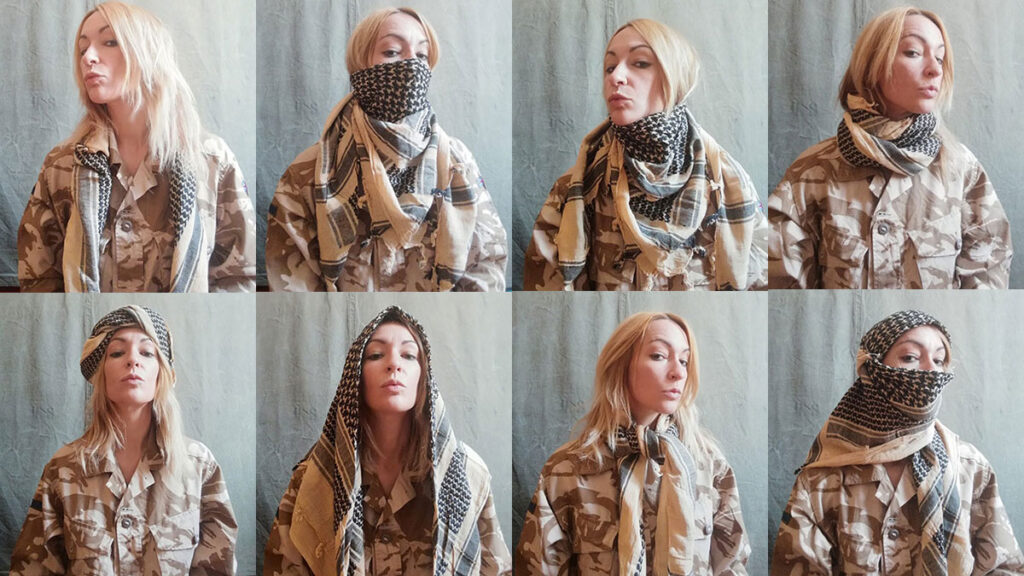
The shemagh (pronounced “schmog”). Few pieces of clothing in the world are as simple yet versatile. Then there are the many types of shemagh fashion, styles, and ways of wearing one. After all, it is “just” a square piece of fabric. Or is it? It can be used in many ways and has a very long history.
by Kyt Lyn Walken
Let’s start by looking at exactly what the shemagh is. By the end of this article, you might want to know the best places to buy one.
Shemagh vs Keffiyeh vs Scarf
People are sometimes confused by the various words to describe this “scarf” we are talking about. Don’t be. It goes by many names: Keffiyeh or Kufiya (named after the city of Kufa about 110 miles south of Baghdad), Ghutrah, Hattah (Palestine), Yamegh, Mashdah, Igal, Chafiye, Dastmal yazdi, Cemedanî. The exact word used usually just depends on its area of use or its origin and the language there. That varies from Persian to Kurdish. While all of the words mean the same thing, the two most common terms are shemagh and keffiyeh. While it can certainly be used as a scarf, it is distinctly different.
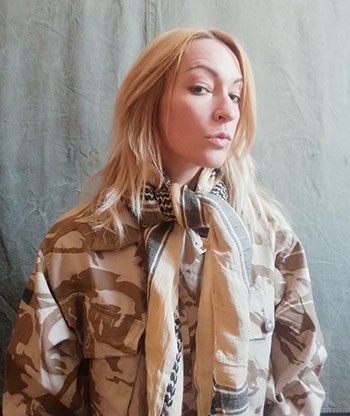
Cowboy fashion scarf, useful on windy days. 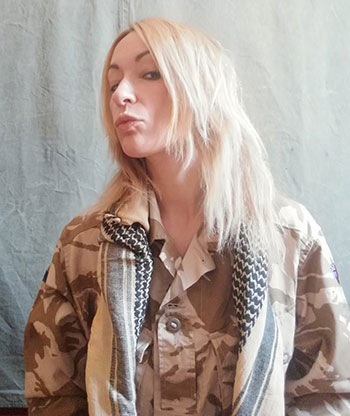
A substitute for scarves.
Brief History of Shemagh
Many of us who are already into outdoor adventuring own a shemagh, but how many of us can say we know the history behind it?
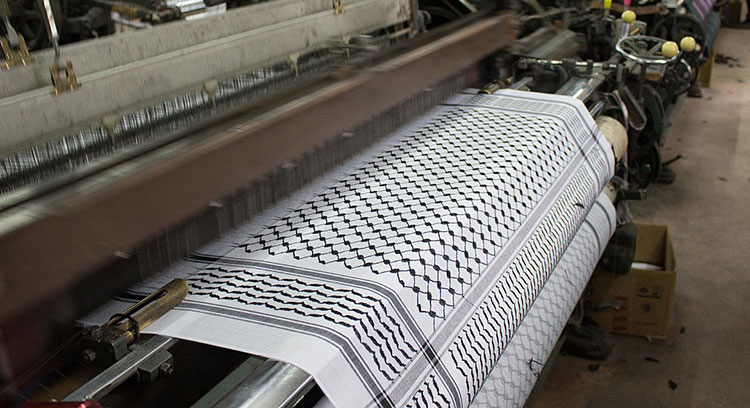
Shemaghs are very common in the Middle East and date back to the Sumerian and Babylonian civilizations of the Mesopotamia period. The first recorded instances of someone wearing a shemagh can be found in history books starting around 800 BC. The earliest shemaghs were made of wool with the original purpose of protecting the wearer from sand, dust, and the sun. They dried quickly and allowed the user to keep their head warm at night and shielded from the sun during the day.
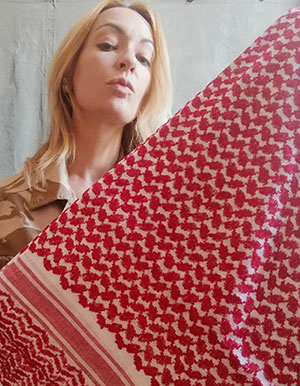
In the 1930s, wearing a shemagh for its practical aspects gave way to wearing them for political purposes, mainly signifying Palestinian resistance to British rule. Wearing a keffiyeh wrapped around the head and face made it harder for British authorities to identify and arrest resistance fighters. The consistent use of them by the resistance made it a hallmark of their united front. By the 1960s, Yasser Arafat had adopted is as everyday attire.
The shemagh hit the Western fashion scene during the eighties along with many other army navy surplus garments such as fatigues, khaki pants, military boots, and so on. This is also when the First Intifada occurred against Israeli, causing wide-spread media attention of many people wearing them. During the first Gulf War, recognizing the shemagh’s utilitarian aspects, British and American Special Forces units began wearing them, further propelling their popularity.
Shemagh Fashion and Styles
Shemaghs come in countless colors, designs, and sizes. If you are selecting a shemagh based on its colors and patterns, make sure you know if its unique characteristics carry some significance. For example, red or green checkered patterns could be interpreted as affiliation with the Palestinian Liberation Organization or Hamas. In other areas of the Arab world, black and white may be more common. In the U.S., mixed colors of black, brown, and olive drab tend to sell best.
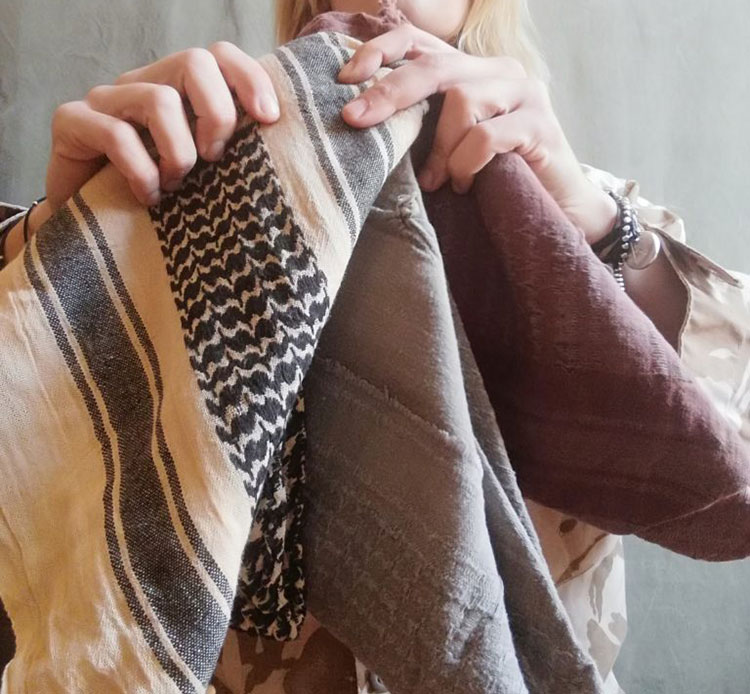
Palestine was the major producer of shemaghs for many years. Today, like with most other things, most are imported from China.
Women’s Fashion and the Shemagh
By far, the majority of women who wear a shemagh hail from Middle Eastern countries. This is a direct result of customs and religion, mainly Islam, which speaks of the need for modesty among women.
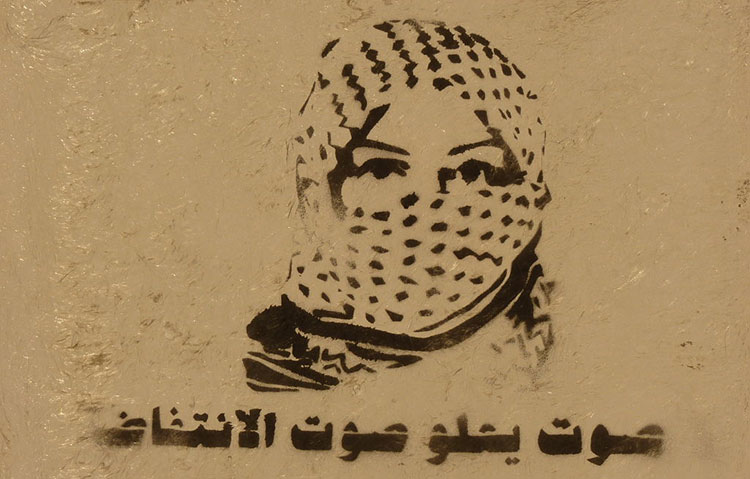
Today, shemaghs are used by women all over the world, whether for modesty, fashion, practicality, or any other reason. In fact, today you can even find examples of the Palestinian keffiyeh being eroticized by fashion designers. In the U.S., many women use the shemagh in the same way many men do – for tactical applications.
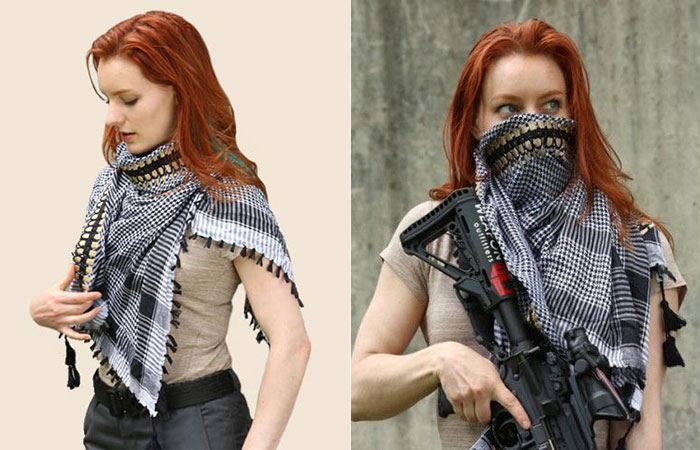
Men’s Fashion and the Shemagh
We covered why men living largely in Middle Eastern countries wore the shemagh – for practical and then political reasons. That continues today, but American men have also taken to the shemagh. It is very common to see U.S. soldiers operating in the Middle East to be wearing the shemagh. Likewise, it has become a staple at American Army Navy surplus stores, online retailers, and outdoor equipment stores. Practical-minded preppers also wear them or carry one in their bug out bag.
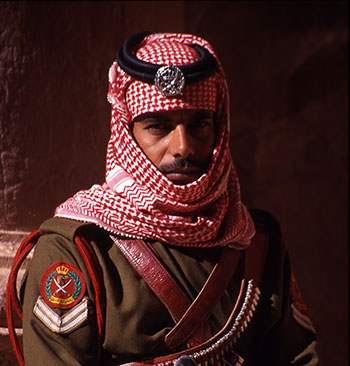
A Jordanian Bedouin non-commissioned officer. 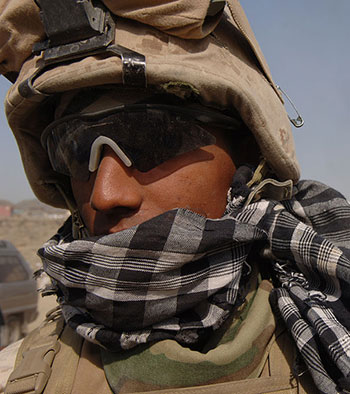
A U.S. Marine at the Afghanistan-Pakistan border.
How to Wear a Shemagh
One piece of gear, so many different ways to wear it.
Your first thought upon getting one might be how do I even wear this thing? The short answer is – any way you choose. The most standard way of wearing one is to follow these instructions:
Step 1: Fold the shemagh into a triangle in front of you. Then wrap it around the back of your head and over top. With the folded edge across your forehead, make sure that about two-thirds of the material is on your left side. The right end should be long enough to come to reach the center of your chest.
Step 2: With your left hand, pinch the shemagh about 3 or 4 inches from the folded edge, and then let that edge hang in front of you
Step 3: Let go of the right end. Using your left hand, hold the edge of the shemagh next to your left cheek and near your left cheekbone. Then use your right hand to pull the left end across your face and over your nose.
Step 4: Continue to wrap the shemagh around your face and head until you get it back over your left shoulder. Hold the right tail to keep from pulling the shemagh off your head as you wrap. Work your hands toward the end as you wrap.
Step 5: Pull the shemagh as tight as you can while still leaving it comfortable to wear. Then take both ends and, roughly near your right temple, tie them in a knot. A basic square knot will secure the shemagh.
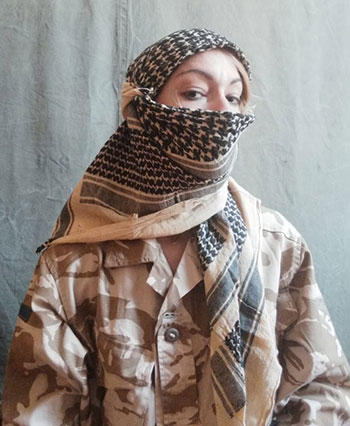
Tied at one side for full coverage as described above. 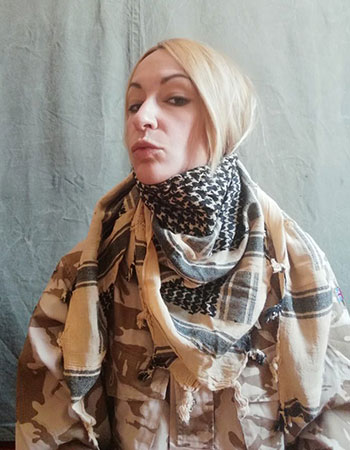
Tied around the throat, the most common way to wear it.
How to Wear a Shemagh in Hot Weather
Need to protect yourself from the blazing desert sun? Here are two common ways to wear the shemagh in hot weather:
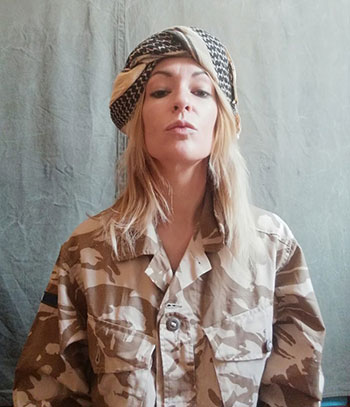
Fashioned as a bandana to protect from direct sun. 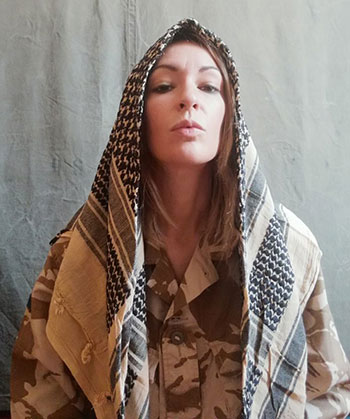
Worn as a veil to protection from sunburn.
Shemagh vs Scarf for Cold Weather
Change of seasons? The shemagh is ready to change with you, moving from protecting you from sun and sand to protecting you from sleet and cold.
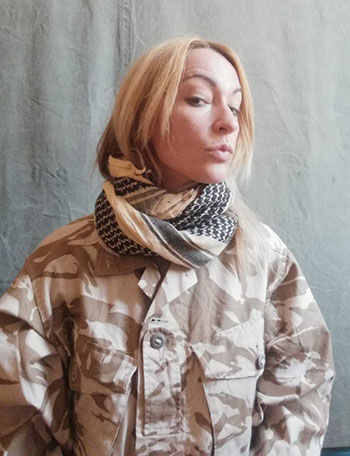
Double wrapped to keep neck warm. 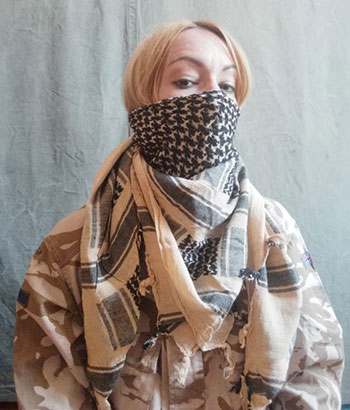
Covering the nose and mouth to protect it from cold winds. Also effective against winds blowing sand up.
Do You Own a Shemagh?
No!? Check the best places to buy one.
Yes? I would love to know when you wear it, what you use it for, and how you wear it. The possibilities are endless. Let me know in the comments section below.

1 comment
hi! i own two, both from Central African Republic. I usually wear them as a normal scarf when i trek in the mountains, to protect me from cold breeze and wind in winter season. Plus i wear them occasionally as a headwrap when i have a bad-hair day.